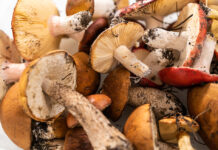
Chances are you’ve heard of probiotics and maybe you’ve even been told you should be taking them. Deciding what probiotics can do for you and choosing the best fit can be more of a challenge. Here’s the low down on probiotics and what you need to do in order to find the best one for your needs:
WHAT ARE PROBIOTICS?
According to the World Health Organization, probiotics are “live microorganisms which, when administered in adequate amounts, confer a health benefit to the host.” In two words probiotics are “friendly bacteria,” similar to the beneficial bacteria living in your gut.
Probiotics can be found in a variety of forms including: dietary supplements (capsules, tablets, powder blends, liquids or drops), foods and even chewing gum. Their benefits range from treating a variety of gastrointestinal (GI) conditions such as irritable bowel syndrome, infectious diarrhea and inflammatory bowel disease (e.g. Crohn’s disease) to preventing and treating urogenital infections (such as vaginal yeast infections), fighting bad breath and reducing the duration of colds. There is also promising research in the areas of probiotics and their relationship to cancer, obesity, allergies, blood pressure and cholesterol, and reducing the susceptibility of upper respiratory tract infections and gastrointestinal illnesses among athletes. Probiotics are also being tested for conditions such as asthma and diabetes.
Considering our bodies contain more bacteria than human cells – and half of the weight of our feces is bacteria – replenishing them is important. Furthermore, a high intake of processed and low-fibre foods, the overuse of antibiotics and increased levels of stress can throw off the balance of good bacteria in our bodies.
CHOOSING THE BEST PROBIOTIC FOR YOUR NEEDS
In Canada, two of the most commonly used bacteria for human health are Lactobacillus and Bifidobacterium because of their long track record for safety. In order to identify which type you need, you must consider the genus, species and strain of the probiotic because the health benefits derived from probiotics are strain-specific.
To treat vaginal yeast infections, you should look for products that contain either Lactobacillus rhamnosus GR-1, Lactobacillus reuteri RC-14 or Lactobacillus rhamnosus Lcr35 (available in RePhresh ProB, Fem-Dophilus or Provacare). Each of these products maintains and/or restores the flora within the vagina.
Also, when choosing a probiotic, you can’t assume that a higher number of bacterial strains are better than a lower number of strains. Quantities for probiotics are measured in colony forming units (CFUs) and more CFUs do not signify a better product, just a different type of probiotic.
For example, many people are often prescribed antibiotics and one unfortunate side effect of taking antibiotics is diarrhea. It can also throw off the microflora of your gut because it kills the good bacteria along with the bad.
Certain probiotic strains have been proven to help prevent antibiotic-associated diarrhea (AAD) such as Lactobacillus acidophilus CL 1285 and Lactobacillus casei LBC80R (available in Bio-K+1285). For individuals that may need to take these probiotics, the amount required in a daily dose could range anywhere from 12.5 billion to 100 billion CFUs – that’s a huge difference! With the Bio-K+ example, one person may only need one regular strength capsule a day (contains 12.5 billion CFUs) where another may need two extra strength capsules (100 billion CFUs) a day.
Interestingly, the probiotic, Saccharomyces boulardii lyo, can also help prevent AAD and is derived from yeast, a type of fungus. Therefore, not all probiotics are bacteria-based.
As you can see, choosing the right probiotic for your needs can be very confusing. Therefore, it is best to consult with a regulated health professional naturopathic or medical doctor, pharmacist or dietitian who can help you find the right bacterial strain and the dosage required for your specific issue. While taking the wrong probiotic will not likely cause you any harm, it may not do any good either and could end up being a waste of effort and money.
DECODING LABELS
In North America, the term “probiotic” is uncontrolled meaning that products calling themselves a probiotic may not actually be one. Health Canada, however, does recommend that products using the term should include the following information (as established by the FAO/WHO) on the label:
• The genus, species and strain of the probiotic(s)
• The minimum number of CFU of each viable strain available until the end of the product’s shelf life
• A serving size, which must deliver an effective dose relative to the health claim
• Health Benefits (health claim)
• Proper storage conditions
• Corporate contact information
Looking for products that contain the information above, will help you find an appropriate probiotic for the condition you want to treat.
CAN YOU GET ENOUGH PROBIOTICS IN YOUR DIET?
Yogurt is the most commonly known food source of probiotics. However, probiotics can also be found in cottage cheese, buttermilk, and fermented foods such as kimchi (fermented cabbage or other vegetables), kefir (fermented milk), tempeh (fermented soybean), miso (Japanese seasoning made with fermented soy, rice or barley), natto (Japanese food made from fermented soybeans) and kombucha (fermented tea). Although these foods contain probiotics, it’s important to note they may not actually be considered an effective treatment for a particular condition as the number of live bacterial strains contained within them may or may not offer a therapeutic effect.
To help support the probiotics residing in your gut, go for foods that contain prebiotics. Prebiotics are nondigestible food ingredients that help feed and grow the “friendly bacteria” in your digestive tract. Food sources of prebiotics include: bananas, soybeans, berries, asparagus, flax, onion, garlic, artichokes, leeks, legumes and whole grains.
FILLING YOUR PROBIOTIC NEEDS
Whether a food contains live bacterial cultures, such as yogurt, or nondigestible substances that support the “friendly bacteria” living in our guts, they both can help increase the amount of “good” bacteria in our intestinal tract. If you are looking to help support the beneficial flora in your colon, then go for foods that contain sources of probiotics or prebiotics. Choosing such foods will not only feed or replenish your “good” bacteria; they may also provide essential nutrients such as protein, calcium, vitamin B12, fibre, potassium and magnesium.
If, however, you are looking to treat a specific condition, such as AAD or a vaginal yeast infection, look for a probiotic that carries the specific strain for that condition and talk to your health care professional to confirm that you have selected the best probiotic for your needs. Furthermore, probiotics could be harmful for people with weakened immune systems, pregnant women, infants and the elderly. If in doubt error on the side of caution and ask an expert.










